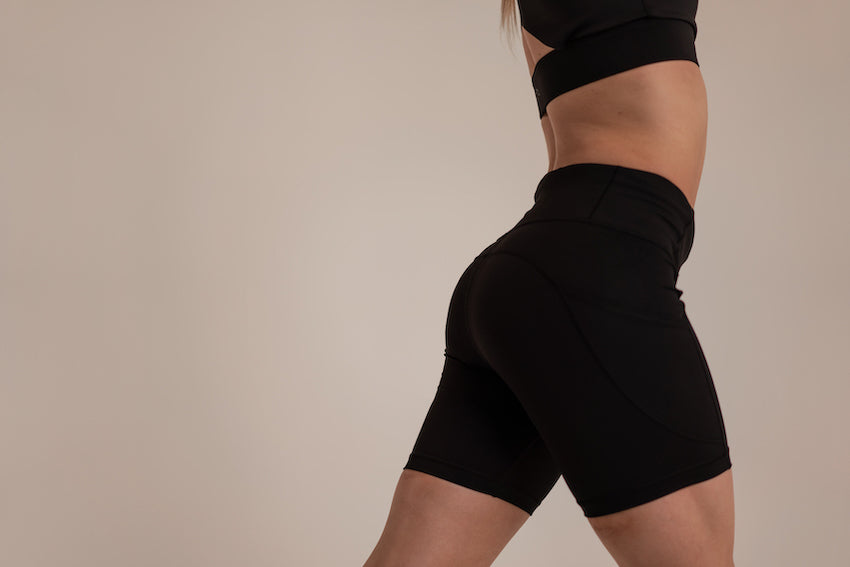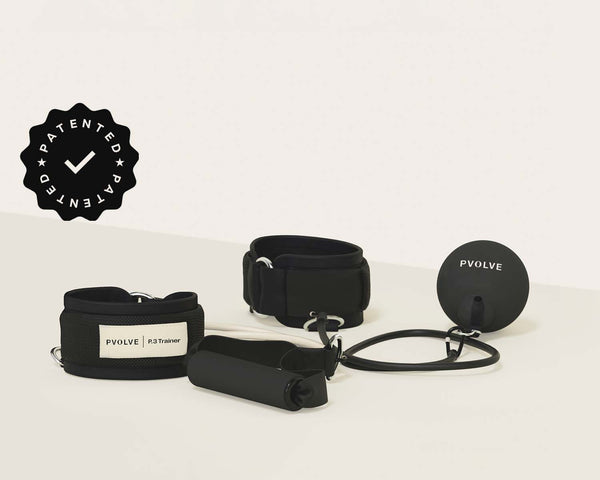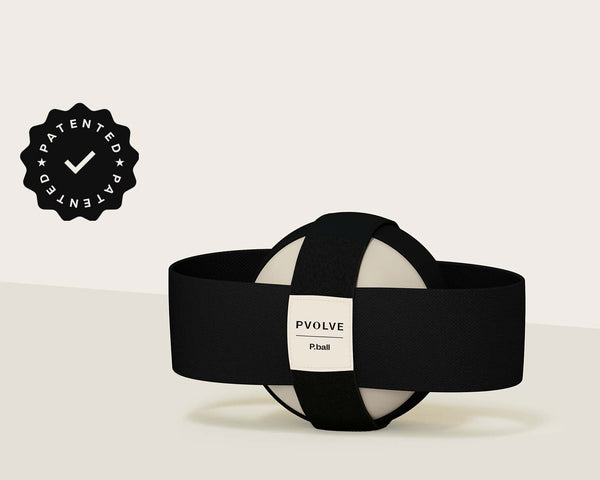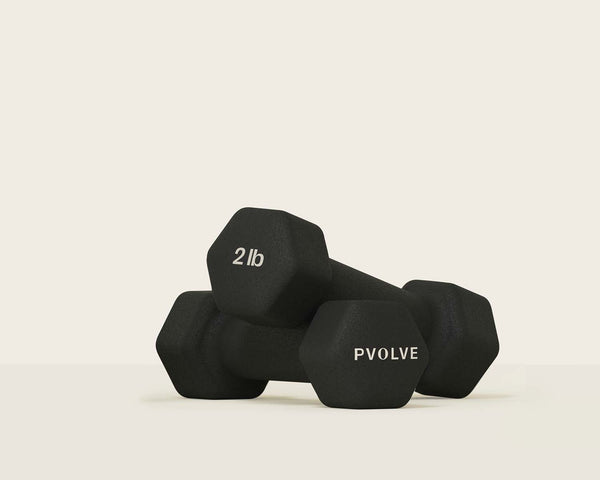Strange but true: Your butt may need a wake-up call. For people with dormant butt syndrome—also known as gluteal amnesia or dead butt syndrome—the glutes have essentially pressed the snooze button and aren’t firing properly. And when your butt muscles don’t work as they should, other areas of the body may have to pick up the slack, which could lead to injuries. But you don’t need to live with lazy buttocks! Dr. Amy Hoover, Pvolve’s Chief Physical Therapist and member of the Clinical Advisory Board, explains how to give your glutes a kick in the, er, butt to get them to activate correctly and fix your dormant butt syndrome.
WHAT IS DORMANT BUTT SYNDROME?
Dormant butt syndrome is a term used to describe an imbalance of the muscles surrounding the hip. A dormant butt occurs when there’s weakness and underactivity in the glutes due to tightness and overuse of the hip flexors, which prevent the glutes from turning on correctly.
A desk job or long commute could be to blame, since one of the top causes of dead butt syndrome is prolonged sitting. Over time, when the glutes are restricted from working correctly, they weaken and become “dormant.” This puts more stress on the lower back, hip, and pelvic joints due to lack of support from the large muscles of the glutes.
HOW TO SPOT DORMANT BUTT SYNDROME
Dormant butt syndrome doesn’t happen overnight. Since muscles and movement patterns change slowly over time, it can be hard to notice when your glutes stop firing correctly, but there are signs to look out for. Most often, dormant butt syndrome manifests as pain or tightness that limits your activity or ability to move the way you want to. Weakness in the gluteals can lead to increased stress on the lower leg, knee, and IT band, so you may experience pain in the knees. Additionally, tightness in the hip flexors can cause anterior pelvic tilt and increased tightness in the lower back, leading to lower back pain.
HOW CAN YOU FIX DORMANT BUTT SYNDROME?
One good way to prevent dormant butt syndrome is to avoid sitting for hours on end. Aim to get up from your chair or the couch and move around once an hour. But avoiding weakness in the hips and tight hip flexors is best done through mindful movement and targeted, whole body functional strengthening. The Pvolve Method, which is rooted in functional movement, targets this area specifically to help you move the way your body was designed to.
Think of it this way: We don’t move in one plane, so we shouldn’t exercise in one plane either. For example, doing squats to strengthen the hips does not take into account pivoting, moving sideways, or turning. This is where the Pvolve Method shines. Moving mindfully through multiple planes helps to turn on muscles in a way that reteaches our body to use optimal muscle patterns—including your glutes.
THE BEST EXERCISES FOR DORMANT BUTT SYNDROME
Performing moves that involve internal and external hip rotation as well as using equipment such as Gliders, ankle bands, and the P.ball will target the whole hip area. Hip opening stretches and hip flexor stretches or recovery workouts that target the hips and pelvis can also help improve and maintain mobility in the hips. The great news is that your Pvolve routines work these exact muscles, helping them activate correctly so that you can fix dormant butt syndrome.
5 MOVES TO STRENGTHEN THE GLUTES
Fire up your backside with these dormant butt syndrome exercises.
HIP HINGE

Stand with feet slightly wider than hip distance and hands clasped by your face. Slightly bend your knees to hinge at your hips, drawing your glutes back so your torso is on a long diagonal while simultaneously unclasping hands and driving arms behind you. Be sure to keep your spine long and abs pulled in to prevent arching in the back. Return to start position.
Do 8-10 reps.
STEP BACK AND REACH

Start in hip hinge position with abdominals engaged, spine long from head to your tailbone, flexion in the front of the hips, and arms outstretched in front of you. Imagine you’re standing at 12 on a clock and step your right leg straight back to 6 o’clock, keeping your heel lifted and pressing down through your toes to engage your right calf and glute. Sweep arms forward and up towards the ceiling without swaying or arching in the lower back. Hold the stretch for a moment and then press your arms back down in front of you while pushing down into your front foot to shift your weight and return your right foot back to your p.sit position.
Do 8-10 reps, then switch sides.
INTERNAL 45

Start with feet hip-distance apart, arms at chest height with fingers interlaced and elbows out, and hinge at hips into a p.sit. Imagine you’re standing at 12 o’clock on a clock, then shift weight into your left leg while internally rotating the pelvis to step your right leg back to 5 o’clock, pushing into your big toe to lengthen your right leg and keeping your right heel lifted (your hips should rotate to point towards 11 o’clock). Squeeze your inner thighs together to engage your right back glute, then scoop the core in to return to start position.
Do 8-10 reps, then switch sides.
OPEN STEP SIT BACK

Start in p.sit position and imagine you’re standing at 12 o’clock on a clock. Shift your weight into your left foot while sweeping your right foot open towards 3 or 5 o’clock. (If you have a precision mat, your right foot should be parallel to horizontal lines on it.) . Keeping knees stacked over your ankles, spine straight, and abs engaged, guide your hips back a few inches to create a slightly deeper crease, then pause for a moment. Staying in this p.sit position, lift up from the smile line of your glutes to open hips, then crease again.
Do 8-10 reps, then return to your p.sit and switch sides.
SOCCER KICK

Stand with hips square, right foot slightly in front of left, arms above the head with light weights in hands. Lengthen the right leg and tap toes forward while leaning slightly back to create one long diagonal line through the body from your right toes out the crown of your head, avoiding arching in your lower back, angling the hip bones up toward the ceiling, and squeezing the glutes. Lower arms to shoulder height, keeping them straight, while straightening back to neutral and raising the right knee toward ceiling. Then extend the arms up and lean slightly back while tapping the right foot forward.
Do 10-12 reps, then switch sides.

























